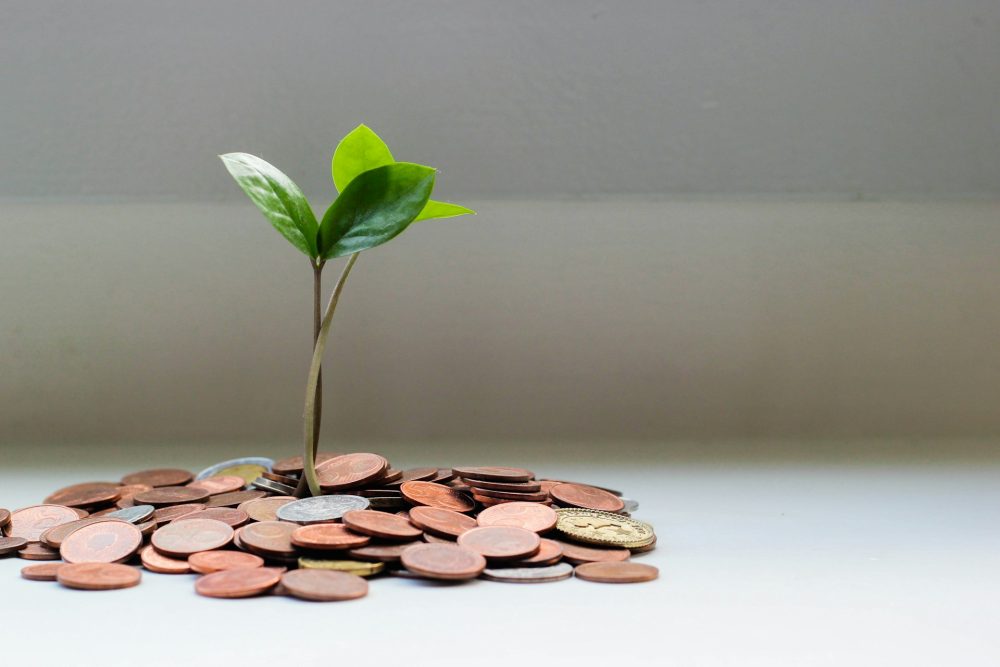Impact Investing
SLLB, Sustainability-Linked Loans to Relaunch Sustainable Financing Tools
Sustainability-Linked Loan Bonds (SLLBs) finance or refinance sustainability-linked loans, addressing transparency and ambition issues often seen in sustainable loans and bonds. SLLBs connect financing to measurable sustainability targets, offering decarbonization sectors a route to sustainable finance. While SLB issuances declined since 2021, the SLL market remains strong, representing 75% of labeled loans in 2024.

They are called Sustainability-Linked Loan financing Bonds (SLLB) and are the new instrument on which international market associations are working to restore confidence in the sustainable products market and strengthen the resilience of sustainability-related structures, with the hope of being able to cope with the slowdown in volumes that has characterized recent times.
SLLBs are defined in the guidelines as “any type of bond instrument where the proceeds or equivalent amounts will be exclusively applied to finance or re-finance, in part or in full, a new and/or existing Sustainability Linked Loan (SLL) portfolio.”
According to analysts, these instruments could offset the main weaknesses often associated with sustainable loans and bonds, namely the lack of transparency and ambition regarding the chosen sustainability criteria and knowledge of the structuring details that are not always visible. Especially for companies operating in sectors that are difficult to decarbonise, SLLBs offer (indirectly) a viable route to the sustainable finance market by linking their financing to specific and measurable sustainability targets, thus mitigating greenwashing concerns.
In this analysis, Océane Balbinot-Viale and Armand Satchian, ESG Analysts, Crédit Mutuel Asset Management, retrace the steps that led to the creation of Sustainability-Linked Bonds (SLBs) and Sustainability-Linked-Loans (SLLs), analyzing their differences and explaining the context in which SLLBs arise. Not without potential limitations, Sustainability-Linked Loan financing Bonds could represent a lifeline for sustainable financing instruments and the ESG market.
The role of financing instruments in achieving sustainability goals
In 2021, the International Capital Market Association (ICMA) launched the Sustainability-Linked Bond Principles (SLBP), guidelines to link the financial characteristics of bonds to the achievement of ESG objectives. At the same time, the European Central Bank (ECB) began accepting Sustainability-Linked Bonds (SLBs) as collateral for its asset purchase program.
In the same year, SLB issuance peaked at $97 billion (9% of total labeled bond issuance in 2021), highlighting corporate participation in the labeled fixed income market regardless of the size of their pre-identified green and/or social asset pool.
However, the situation has changed in recent years since the initial popularity of the instrument: in 2023, in fact, issuances amounted to 66 billion dollars (6.7% of total labelled bond issuances) and the decline in volumes continued in the first half of 2024 (-34% y/y, equal to $275 billion).
Conversely, despite the slowdown in the last year, mainly due to rising interest rates and perceived reputational risks, the SLL market has proven to be more solid and resilient than the SLB market and now represents the majority of labelled loans (around 75% of the total labelled loan market in H1 24).
Arguably one of the key drivers of the growth of the sustainability debt market in the banking sector is the imperative to decarbonise loan portfolios . The initial push came from a regulatory perspective in 2020, with the ECB requiring banks to incorporate climate-related risks into their risk management and stress testing frameworks . The Bank of England, through its Prudential Regulation Authority, also put significant regulatory pressure on banks when it issued its Supervisory Statement in 2019, which set out expectations for developing effective plans to address climate-related financial risk.
While a recent ECB study suggests that euro area banks have started to assess climate risk in their lending policies, several stakeholders have noted that the integration of climate transition risk has historically focused on reporting and commitments (e.g. a heat map to classify the materiality of transition risk, financed emissions and associated targets) and that banks have generally struggled to fully incorporate these risks into decision-making processes.
For this reason, beyond the initial (and ongoing) regulatory push, initiatives such as the UN-led Glasgow Financial Alliance for Net-Zero (GFANZ) and the Net-Zero Banking Alliance (NZBA) have emerged to build a resilient SLL market. For example, NZBA members commit to aligning their lending and investment portfolios to net zero emissions by 2050 and are required to set targets for 2030 or earlier within 18 months of joining.
Additionally, members commit to disclosing annual reports measuring progress against board-approved transition strategies, including sectoral climate-related policies and actions.
Banking and Transition Risks: Sustainability Linked Bonds and Sustainability Linked Loans Compared
While investors sometimes lack access to sufficiently comprehensive information on how banks concretely address climate transition risks within their investment portfolios, there is growing awareness of how SLLs can positively contribute to reducing the banking sector’s exposure to climate transition risks.
Another reason why the decline of SLLs has been less pronounced than that of SLBs is that SLLs are often syndicated by a limited number of banks, with the necessary expertise and know-how. The close collaboration between borrower and lender allows for a detailed understanding of sustainability needs and objectives , which inevitably facilitates the structuring of the loan and, more specifically, the definition of key performance indicators (KPIs) and sustainability performance targets (SPTs), which are closely aligned with the borrower’s unique sustainability strategy.
Frequent interaction between borrowers and lender facilitates monitoring and adjustments of targets and the resulting discussions. It also makes it easier to agree on the economic outcome (e.g. coupon adjustments or lump sum payments based on the achievement of predefined SPTs). In contrast, the bond market involves a much larger and more diverse group of stakeholders, which makes customization and ongoing engagement more challenging . Therefore, the credit market can accommodate more complex and varied KPIs, while the bond market tends to favor simpler ones.
Last but not least, unlike SLBs, the SLL market flourished due to the adaptability of the instruments to the needs of companies of various sizes, including small and medium-sized enterprises . In addition, banks had structures for other types of syndicated loans, which could be adapted to SLLs.
Until now, SLBs and SLLs have been considered the main financing instruments labelled to support the climate transition. However, the growing reliance on SLBs and SLLs has limited the range of “transition finance” instruments that companies with limited green or social assets can choose from.
These companies often operate in “enabling green industries” that have limited but essential green assets in the value chain of green projects (such as mining), or in hard-to-abate sectors that have a clear path to net zero but are at the beginning of their sustainability journey and have limited green assets (such as steel production), or in sectors that do not have a clear path to net zero but have implemented measures that can already drastically reduce their carbon footprint (such as long-haul aviation).
A new tool to relaunch ESG financing instruments: Sustainability-Linked Loan financing Bonds (SLLB)
Several stakeholders, such as ICMA or the Loan Market Association (LMA), are actively working to restore confidence in the sustainability-related market and have recently launched guidelines for a new type of instrument that could help strengthen the resilience of sustainability-related structures: Sustainability-Linked Loan financing Bonds (SLLBs).
SLLBs are defined in the Sustainability-Linked Loans financing Bonds Guidelines (SLLBG) as “any type of bond instrument (i) where the proceeds or equivalent amount will be exclusively applied to finance or re-finance, in part or in full, a portfolio of new and/or existing SLLs, aligned with the SLL Principles and (ii) that are aligned with the components of the SLLBGs (which were inspired by the Green Bond Principles), the Social Bond Principles and the Sustainability Bond Guidelines.”
By engaging fixed income investors and increasing the visibility of funded SLL portfolios, SLLBs could offset the two main weaknesses often associated with SLLs and SLBs . SLLs are often criticized for their lack of transparency and ambition with respect to the chosen sustainability criteria (including KPIs and SPTs) and even more so because the details of the structuring are not always visible. Despite attempts to facilitate access, the SLB market has in some cases let go of some issuers, especially those operating in sectors that are difficult to abate and that continue to have greenwashing problems.
Indeed, for companies operating in challenging sectors, SLLBs (indirectly) offer a viable route to the sustainable finance market by linking their financing to specific and measurable sustainability targets, thereby mitigating greenwashing concerns. SLLBs can also ensure greater market transparency by setting stringent criteria and accountability measures for borrowers.
This ensures that sustainability targets are not only ambitious but also verifiable, thereby increasing the credibility of the labelled finance market. Ultimately, SLLBs foster a more inclusive approach to sustainable finance by enabling the participation of a wider range of companies, provided they adhere to stringent sustainability criteria, and thus facilitating a more transparent and accountable financial ecosystem.
Greater transparency in the SLL market also means greater transparency on the measures adopted by banks to improve the ESG performance of their portfolios . For this reason, sustainable investors are pushing for banks to consider SLLBs as an opportunity to set clear and ambitious standards for SLLs, but also to be transparent about how these standards align with the bank’s own sustainability goals.
Since most SLLs have GHG emissions KPIs (over 70% according to Moody’s), SLLBs could provide insights into how SLLs are being used to support the decarbonization of a bank’s portfolio.
Furthermore, by engaging more openly in the SLLB market, banks can also clarify more precisely the scope of their sustainable finance metrics and associated targets , which are commonly considered a pillar of their sustainability strategy . To date, not all banks have a clear definition of their sustainable finance metrics. When they do, they rarely define precise selection criteria for SLLs. Sustainable finance metrics reports should be improved to provide a detailed breakdown of sustainability tools (e.g. by type, sector and project).
Potential limitations of SLLBs
The guidelines for the financing of sustainability-linked bonds recognize various “options that may be available to issuers in order to achieve an appropriate level of transparency,” one of the main objectives of the initiative.
The first option (recently used by Crédit Agricole) aims to set detailed criteria (e.g. KPIs, SPTs) and to obtain an external review of the overall framework. While this should increase clarity on which SLLs meet the main criteria, the approach may be too selective. Indeed, increased scrutiny of the SLLB initiative could lead to more ambitious and stringent criteria that many SLLs granted by banks may not meet.
While SLLBs offer a significant opportunity to increase standards and transparency for all SLLs, there is a risk that these positive impacts will only apply to the most ambitious loans (creating a two-speed market). While external review can help assess the quality of SLL assets, it is not entirely exhaustive due to the lack of contextual information, particularly at transaction level, such as the country of operation (the materiality of the KPI and the ambition of the SPT may vary depending on this factor) or the company’s reference group (used as a benchmark to assess the ambition of the borrower’s target).
The alternative approach (recently used by Nordea) provides less detail at the framework level , but requires an external review for each SLL. The external review is certainly in line with best practice and setting general objectives could leave more room for customization of each SLL. While this could help mitigate one of the risks mentioned above, i.e. increasing clarity on best practices for SLLs, it could end up weakening the main goal of SLLBs, i.e. transparency. Indeed, for confidentiality reasons, banks (and external auditors) may not be able to share the sustainability credentials of each transaction.
While third -party review is comforting for sustainable investors, they will not be able to form their views if key data is missing. It goes without saying that the existence of these different options could also create some discrepancies in how banks approach SLLBs.
However, despite the potential limitations, the greatest strength of SLLBs lies in their uniqueness and they may be a hope to pave the way for improving transparency and strengthening the ambitions of the transition strategies of both financial institutions and the businesses they finance.
__
(Featured image by Towfiqu Barbhuiya via Unsplash)
DISCLAIMER: This article was written by a third party contributor and does not reflect the opinion of Born2Invest, its management, staff or its associates. Please review our disclaimer for more information.
This article may include forward-looking statements. These forward-looking statements generally are identified by the words “believe,” “project,” “estimate,” “become,” “plan,” “will,” and similar expressions. These forward-looking statements involve known and unknown risks as well as uncertainties, including those discussed in the following cautionary statements and elsewhere in this article and on this site. Although the Company may believe that its expectations are based on reasonable assumptions, the actual results that the Company may achieve may differ materially from any forward-looking statements, which reflect the opinions of the management of the Company only as of the date hereof. Additionally, please make sure to read these important disclosures.
First published in ESG NEWS. A third-party contributor translated and adapted the article from the original. In case of discrepancy, the original will prevail.
Although we made reasonable efforts to provide accurate translations, some parts may be incorrect. Born2Invest assumes no responsibility for errors, omissions or ambiguities in the translations provided on this website. Any person or entity relying on translated content does so at their own risk. Born2Invest is not responsible for losses caused by such reliance on the accuracy or reliability of translated information. If you wish to report an error or inaccuracy in the translation, we encourage you to contact us

-

 Impact Investing2 weeks ago
Impact Investing2 weeks agoChristmas Plastic Waste and the Path to Circular, Low-Emission Solutions
-

 Africa5 days ago
Africa5 days agoDamane Cash and FMSCD Partner to Enable Cash Advance in Exchange Offices
-

 Crowdfunding7 hours ago
Crowdfunding7 hours agoGörlitz Christmas Crowdfunding Campaign Exceeds All Goals
-

 Business2 weeks ago
Business2 weeks agoThe TopRanked.io Weekly Digest: What’s Hot in Affiliate Marketing [Super Partners Review]
















